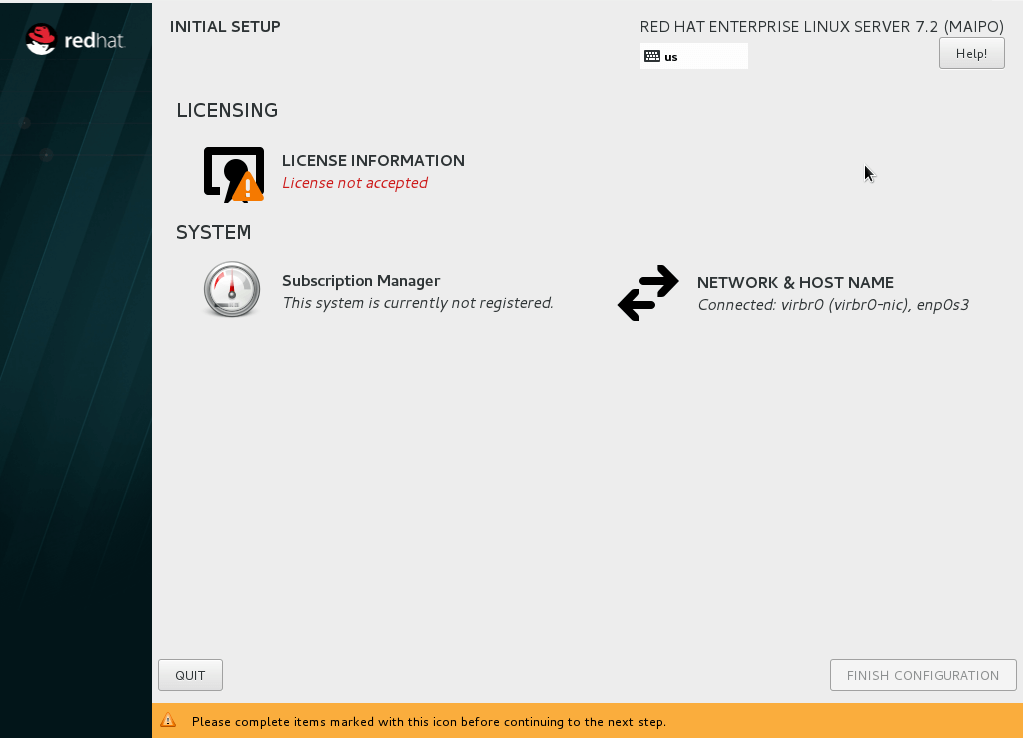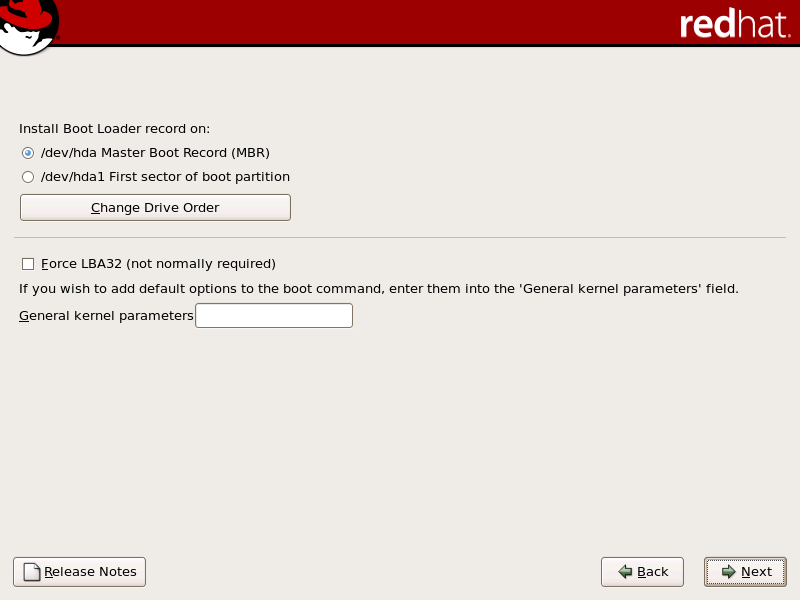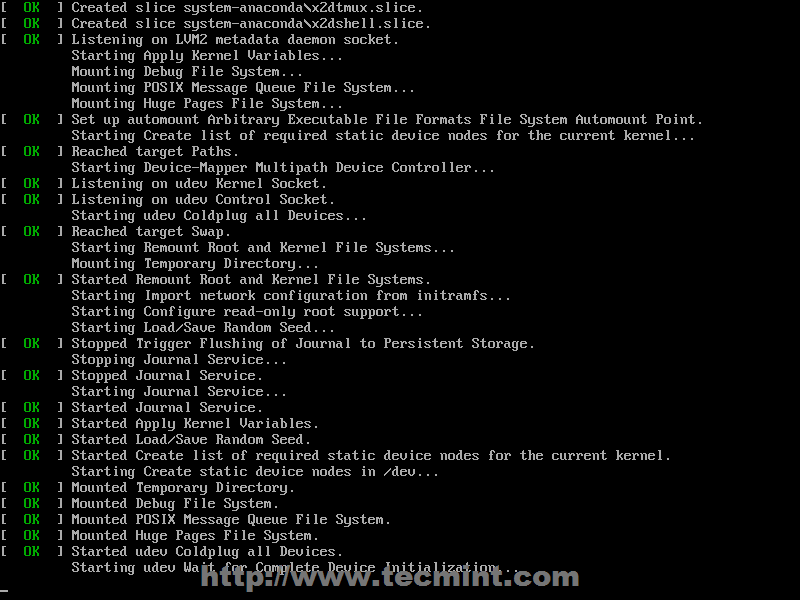Install Red Hat Linux Dual Boot Windows 7
I have currently Windows 7 running and installed on partition C. I have partition D empty, and I would like to install Red Hat on it without affecting Windows seven ( i.e., dual boot Windows 7 &a. Feb 04, 2017 Tech Hub Pro Presents: Today i will Teach you how to install Red hat linux in virtual box rhel 7 i have shown graphical method of installation download link.
Firstly I recommend you to go for Fedora sponsored by Red Hat which is more updated than RHEL and you don't need a subscription like RHEL there's almost no difference in both of them and in Fedora you also have a new and fast package manager DNF instead older Yum.
- Turn on your Windows 7 PC and create a “free space (in extended partition)”/ “unallocated space” in your HDD needed for RHEL installation partition from your Windows 7 computer. To do this follow below steps:
- Hit Windows+R from keyboard to open run dialog box. There you type in “diskmgmt.msc” and hit Enter.
- After doing previous step you will see Disk Management like:
- Here If you already have unallocated space/ free space ( most people do not have this) of at least 20GB turn off your PC and move to step 1.
- If you do not have unallocated space/free space then you right click on any of the drive (the drive that have free space of at least 15GB=15000MB to 20GB=20000MB) among C:, D:, F: etc. (Here the drives that do not have drive letters like C, D etc are linux partitions and hence can’t be asigned a drive letter without a third party software. You don’t need to worry about this) and then click Shrink Volume (For me it was C:)
- Enter the amount of Space in MB (15000 for 15GB) and click Shrink.
- After Shrinking a volume you will get unallocated space (If you shrink a primary partition) of 15 GB or you will get free space (If you shrink an extended partition) of 15 GB. For me It was C:
- It dosen’t matter either you have unallocated space (colored in black) or free space (colored in lime/light green) both are the same. Now that you have 15GB space for RHEL move to next step.
- Download Red Hat Linux Free if you already don’t have one burn it to a DVD using CDBurnerXP: Downloads or to a USB using Rufus Create bootable USB drives the easy way.
- Now Place your RHEL DVD/USB installation media and turn off your PC.
- Now turn on your PC and enter BIOS and boot from that RHEL installation media (DVD/USB) in legacy boot order.
- When the installation start you click “Install or upgrade an existing system” (I’m doing this in Virtual Box But you should follow this for a real machine)
5. Now you will get to disk checking there you hit tab followed by Enter from the keyboard to skip disc checking.
6. Now you click Next then next until you see storage device selection screen there you select “Basic Storage Device” and click next

7. Now set root Password and click next
8. Now this is the most important step of choosing installation type. You select “Create custom layout” in this step and click next.
9. Here you will see your unallocated space/ free space that you have created in previous steps showing as free and its size select it and click create (don’t bother about the other partitions your goal is to select the free/unpartitioned space and click create)
10. When you click create you will be asked to select partition type there you select “Standard Type” and then click create.
11. clicking on create will open creating “partition type” there you set mount point as / (forward slash), Filesystem type as Ext4 and size to 15000 MB then click OK
12. After clicking OK click next and then you may be asked to create a swap partition simply ignore it and click continue then click “write changes to disk” again click next until you see bootloader options here you will also see your “Windows 7” installation you can also set is as default. If you don’t see your Windows 7 boot list then something is wrong that is you must have installed Windows 7 in legacy mode and installing RHEL in legacy mode too. In the below picture it is not showing because I’m installing it in Virtual Box. Now you again click next.
13. Now select installation type that is you only want the server or desktop or anything else and click next.
14. Your installation will start and the setup will install packages here you just wait for it to finish.
15. After packages are finished installing you will see a congratulation greeting or something like that here you click reboot and remove your installation media. Hurry you have finish installing a dual boot system.
Good luck!
I have currently Windows 7 running and installed on partition C.I have partition D empty , and I would like to install Red Hat on it without affecting Windows seven ( i.e., dual boot Windows 7 & Red Hat6 ).
Can any one please guide me how to do so?I
fixer12344 Answers
I assume when you installed windows, you must have left some free space on your hard drive for the RHEL 5 installation.
burn the image to the usb drive, boot from it, install graphically, install grub as bootloader and TO THE MBR

Now, fdisk -l to list the paritions check and look up the parition for example /dev/sda2 where windows is installed as ntfs.open up a terminal and edit with vi /boot/grub/menu.lst and add the following corresponding to your windows parition.
reboot and you should be able to boot both into rhel and windows
Specially designed Vehicle Sealed Strip can be used on side of car doors, boot, engine, low the win and the sound of vibration, alse can be used on door frame, window, forbid collision in order to make the outside noise low. Fiat stilo drivers door wont lock. You can re-user the original retainer of your car or waterproof double-side adhesive tape to install this weatherstrip.
Sathyajith Bhat♦You should be able to boot from your Linux CD, and during the installation process, choose the correct partition to install Linux on. From there, the Linux installation process should automatically configure a boot loader for dual boot.
It's entirely possible that some step of this process won't be automatic, and the biggest risk you run is having the installer delete your Windows partitions. Ideally, with dual boot, you would have a separate hard drive to install on, and could disconnect your Windows drive to protect it. From there you could boot from the BIOS quick select (usually the Esc key).
All that said, I suggest setting up a VM product like VirtualBox or VMWare Player, and seeing if running RHEL6 in a VM meets your needs. If it does, you're all set, and can work in both OSes side by side. If you still need to install RHEL to the hard drive for performance reasons, you'll at least have a better idea of what to expect from setting up the VM.
Joe InternetJoe InternetThis grub.conf worked with a workstation with EFI with 2 disks, sda, sdbRed Hat Enterprise 6.6 was installed at sda
Windows 10 pro was installed at sdb
at /etc/grub.conf or /boot/efi/EFI/redhat/grub.confthe top section was auto created by anaconda, the Windows 10 had to be remade
the UUID for Windows 10 section was copied from the anaconda's oneso keep every thing from top to initrd line
please notice when installing Linux after Windows to include de /boot/efi partition but not to format it.
on a 1 disk system already with Windows 10 OEM the ESP partition (EFI) is the 2nd one so the root line should be:
this case was for a legacy situation with GRUB v.1 bual boot;
Linux CentOS 7 / Red Hat 7 deals ok with dual-booting with GRUB 2
You said that you're currently running Windows 7 and have it installed on partition C. Partition D is empty, and you want to install RHEL6 on it without affecting Windows 7 (i.e., dual booting Windows 7 & Red Hat6).
First of all, log into Windows 7 and remove the D partition from disk management. Go to the run dialog box and type diskmgmt.msc.
Now, check free space. You can use the shrink option in Windows 7 to decrease your main partition (the C drive). Right-click on the C, then shrink the volume. After that you have to restart your system because you changed your main partition configuration.
Then, boot from the RHEL6 DVD and install RHEL6 normally. Now during the installation, when RHEL6 asks for type of installation, choose create custom layout.
My partiton layout is:
Windows
- C partition is 28 GB
- D partition is 128 GB
Linux

/partition is 26 GB/bootpartition is 500 MB/homepartition is 16 GB/tmppartition is 4 GB/usrpartition is 6 GB/varpartition is 14 GB/usr/localpartition is 4.5 GB/optpartition is 11 GBswappartition is twice the size as your RAM/yoopartition is 16 GB,vfatfilesystem
If you're using two HDDs, then the installation is different, so I recommend you to install on one HDD only.
slhckDual Boot Linux And Linux
protected by Canadian LukeNov 8 '18 at 19:18
Install Red Hat Linux Dual Boot Windows 7
Thank you for your interest in this question. Because it has attracted low-quality or spam answers that had to be removed, posting an answer now requires 10 reputation on this site (the association bonus does not count).
Would you like to answer one of these unanswered questions instead?